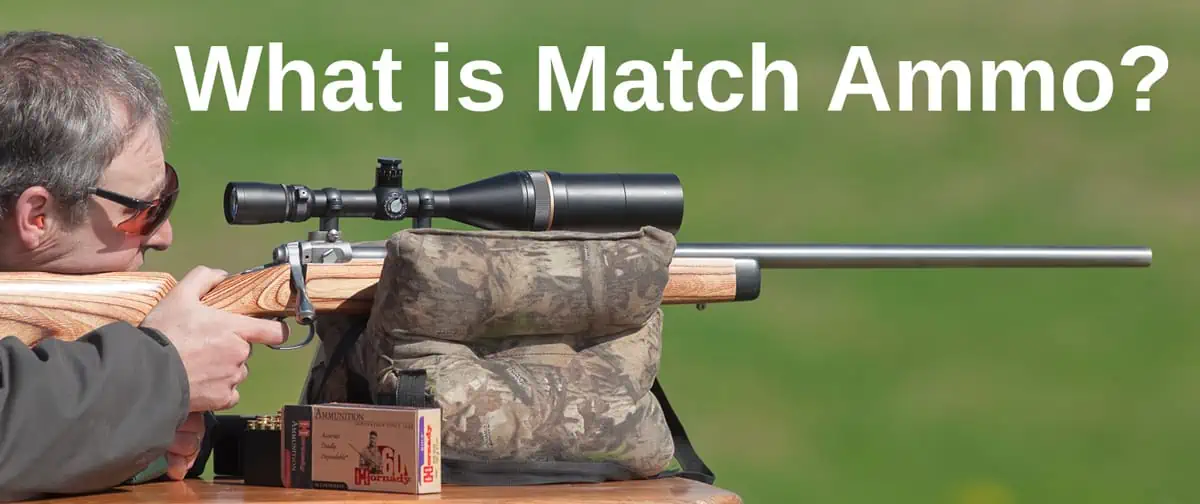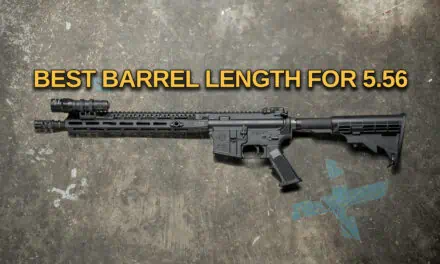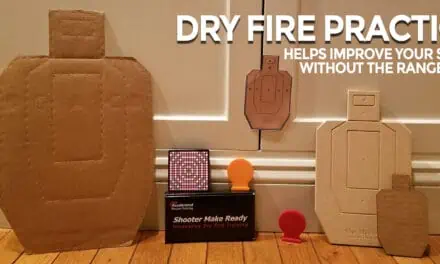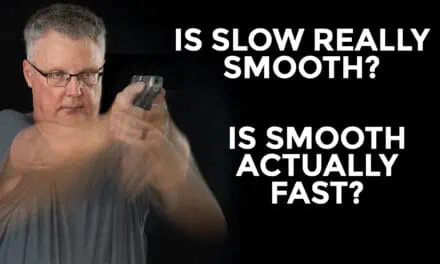In theory, match ammunition is what we use to shoot competitive matches, right? The reality is a little more complicated.
What is Match Ammo?
Manufacturers optimize match grade ammo for accuracy and consistency. This includes tighter tolerances from bullet weight to powder charge than what you might see from bulk rounds. While it’s generally more expensive, match ammo does typically produce more consistent results than cheaper, bulk ammunition.
Real World Match Ammo Range Results
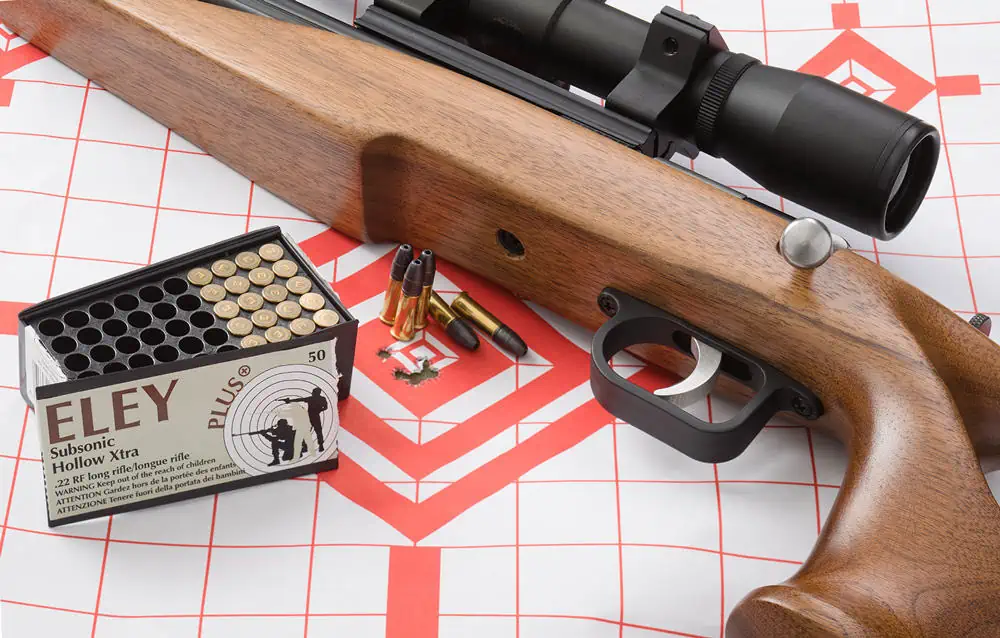
I got my introduction to match grade ammunition a couple of decades ago. We shot a basic 10-22 with a gritty trigger during the same trip we fired a tuned and accurized Volquartsen heavy barrel match rifle. The basic rifle had a 4x scope. The fancy one a 4-16x zoomed in and focused carefully on the paper target at 25 yards. Both rifles were fired from a rest, and three marksmen tried them in turn.
The result was a little puzzling: while the match rifle was definitely more accurate and more comfortable to shoot well, at 25 yards the difference between them was minor. The difference between the three types of ammunition we had was far more drastic. With bulk-packed promotional grade ammunition, I forget what brand at this point, we all got 10-shot groups around 2.5 inches wide by 4 inches high. It was a wonder that the two rifles even cycled, because the difference in velocity between was plainly noticeable. CCI Mini Mags produced one-inch round 10-shot groups. Eley Practice Match, at that time the cheapest match ammunition from that brand, went into a single hole when shot from Volquartsen, and only slightly less accurate from the stock 10-22. All of a sudden, the greater price of match ammunition didn’t seem like such an unreasonable expense: at longer distances, the dispersion of the cheapest load would have almost guaranteed a miss on something like a squirrel or a rat, while carefully aimed Eley would have hit.
How Manufacturers Make Match Ammo
The methods of making match ammunition involve bullet design optimized for accuracy, incredibly tight tolerances in everything from bullet weight to seating depth, crimp strength, powder charge, primer heat, and bullet concentricity. Manufacturers individually pack cartridges to avoid damage in transit. Unlike bulk ammunition, powder and bullets are kept consistent from batch to batch and, ideally, from lot to lot. The idea is both much greater accuracy than usual gun fodder and perfect consistency over time. A sniper who spent time and ammunition to create a 1000-yard dope chart for a cartridge shouldn’t have to wonder if ammunition from this year’s box will shoot differently from last year’s.
Is Match Ammo More Consistent?
 How much difference does match grade ammo make for a typical, non-match rifle? Most 5.56mm fighting rifles shoot 3-5 MOA with bulk FMJ ammunition. The same rifles with good hunting loads are likely to shoot 1.5 to 2 MOA groups, greatly improving hit probability. Match ammunition, depending on the exact platform, can produce dispersion as low as 0.5 MOA and as high as 1.5 MOA. For a rifle fired by a competent marksman with a scope from a supported position, the improvement in the likelihood of first-shot hit increases greatly. That’s equally helpful to a police sniper and a deer hunter.
How much difference does match grade ammo make for a typical, non-match rifle? Most 5.56mm fighting rifles shoot 3-5 MOA with bulk FMJ ammunition. The same rifles with good hunting loads are likely to shoot 1.5 to 2 MOA groups, greatly improving hit probability. Match ammunition, depending on the exact platform, can produce dispersion as low as 0.5 MOA and as high as 1.5 MOA. For a rifle fired by a competent marksman with a scope from a supported position, the improvement in the likelihood of first-shot hit increases greatly. That’s equally helpful to a police sniper and a deer hunter.
Other Factors to Maximize Match Grade Ammo’s Performance
Other factors in getting accurate hits remain in play too. The first and foremost is the shooting technique. Is the rifle steady? How about the trigger pull – is it clean? Is the sighting done right? Are the holdovers for wind and distance considered? Until those conditions are met, match ammunition gives only a minimal advantage. Is the terminal effect of importance, or only scoring a hit? A rat hit with a solid match .22 bullet will be just as dead as the one hit with an expanding hypervelocity projectile. Of course, deer hit with a non-expanding open-tip bullet might run 200 yards instead of 20 when hit with a mushrooming soft point.
There are ballistic tip hunting bullets that come close to match accuracy. Some match bullets have terminal effects only slightly inferior to hunting bullets. Some actions require a more robust crimp than typical for match loads. This result in dangerous bullet setback if the more delicate match ammo is used in place of military ball. Quite a few 22LR autoloads require the robust recoil of a high-velocity load, something that match ammunition — usually loaded to standard or subsonic velocity — will not provide. Federal does load high-velocity Hunter Match which combines an accurate expanding bullet with fairly high velocity but, in theory, that load goes up against the reality of accuracy degradation when the projectile goes transonic at 35 yards. In reality, it is still sub-MOA from a target rifle at 50 yards, and around 1.5 MOA from a utility-grade rifle.
Short range speed-shooting competitions like Metal Madness and Rimfire Steel Challenge turn up both schools of thought: some people run match ammunition, others prefer plated, unlubricated Mini Mags and similar streamlined full-power loads for greater cycling and feeding reliability. From a hand-held pistol shot on a timer, the difference between match and mid-grade loads is unlikely to be noticeable. On the other hand, the percentage of misfires will decrease as the ammunition quality improves.
When To Use Match vs. Other Ammo
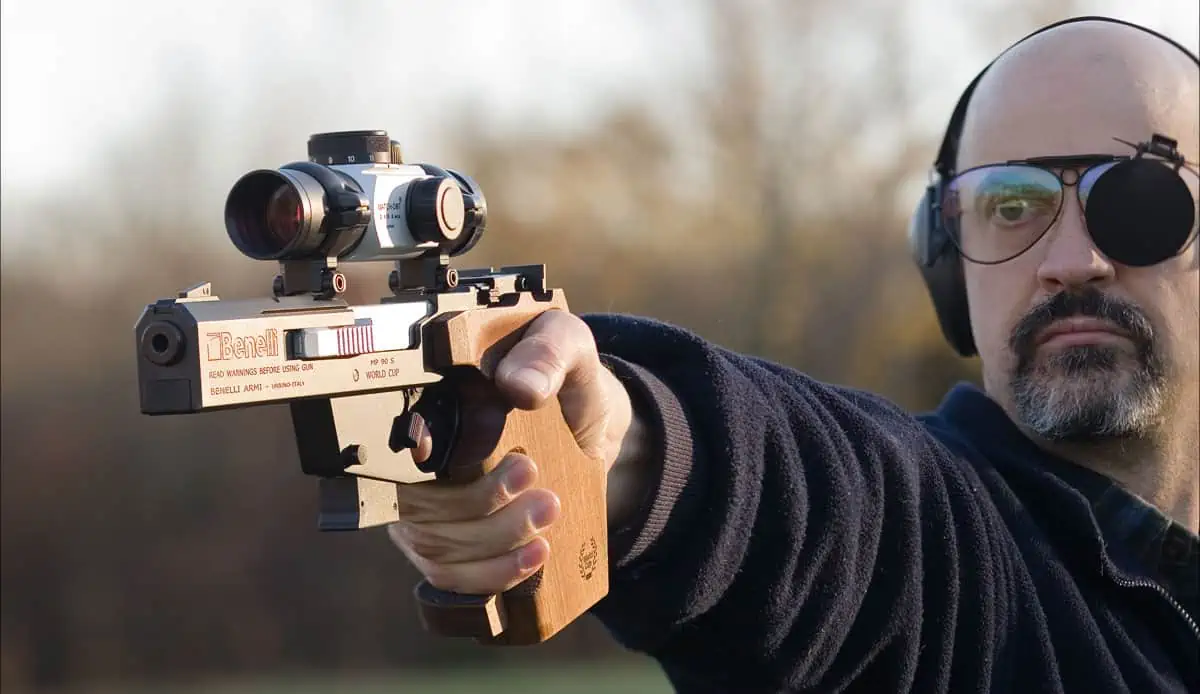
Besides the shooter skill, the other contributing factor to accuracy with match ammunition is a good optic and knowing how to adjust for wind and distance. Despite the expense, we still use high-grade rimfire ammunition to learn and train: it’s a bargain compared to centerfire cartridges. The low shot dispersion makes it far easier to interpret the results too. If you know your gun shoots 1 MOA mechanically, you can interpret and correct a 3 MOA deviation from point of aim. 3 MOA mechanical dispersion makes it harder to fine-tune, hiding grosser errors in the overall inaccurate spread. This is less true for hand-held shots made with quick but imprecise express sights. So, cheap plinking ammunition does have its place. There’s not much of an advantage to match fodder when rolling pop cans at a 15-yard farm range.
Keep in mind that not all match ammunition is created equal. One load might be objectively as well-manufactured as the next, but the fit to a specific rifle or handgun will differ. Recently, an AR15 accuracy test turned up an incredibly consistent 0.75 MOA with Hornady 73gr ELD Match. Sig Elite 77gr OTM and Federal Gold Medal Match 68gr tied at 2 MOA, Hornady 68gr OTM shot 1.3 MOA.
These results don’t mean that the less favored loads are any worse than the winner. It just means they fit the specific rifle less well. A Volquartsen 5.56mm match rifle shot best with 75gr match from several makers. Completely unexpectedly, Black Hills remanufactured 55gr soft point loads bought on closeout performed equally. The lighter bullet would not hold up as well to wind at longer ranges. However, it does provide the flattest trajectory up close and a great effect on varmints. The point is that just buying a case of match ammunition is unlikely to produce the best outcome. Get a box of each likely load to check accuracy and cycling. Then, stock up on whichever proves the best for your individual gun.

